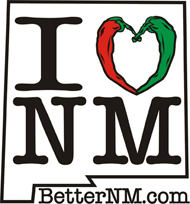Mikaela ponders:
So the issue is always: how do you know what the community wants?
We're supposed to be helping communities to realize their visions, right? Make the things they want to change or improve or protect better in the ways they identify. That's the idea behind this whole "community planning" endeavor.
In order for us to engage in this process, we ask people to come to community meetings; we do surveys; we spend time in community places; we talk to people -- all in the interest of finding the range of desires and visions and motives of people in the community. At the end of the day, we try to hear the things said the most often, balanced with the things said the most vehemently & the things we may know (whether learned from a community member or from separate investigations) will have huge impacts or implications for a particular place.
And at the end of the day, whether we're optimistic or idealistic or cynical or practical or political, we take a leap of faith that involves several rather large steps 1) that there is something called community -- even if there are competing ideas and interests within it, 2) that we can know what/who it is, and 3) that we can be involved in a helpful way.
Planning theory spends a lot of time finding the indicators for community, because really, how do you know when you know who the community even is, much less what they want? Very quickly and easily, fingers can be pointed at planners because they don't "really know" the community or they don't "really know" what the community wants. And invariably, the person pointing the finger has a different idea of community and community vision.
All of a sudden, we're talking about representation. Who can say they know the community? Let's be frank: there is no perfect planning process out there that ensures community involvement. There is no magic "enough." There is no end. There is no object called community that can be known.
The best we can do is engage community members that want to be engaged or that are willing to be goaded into engaging. And then we have to be careful not to give false hopes of what is really possible while working to expand what's possible.
In the best of worlds, communities would not need planners at all. There would be enough interaction on a daily basis that visions and goals and necessary steps would already be clear, and communities could approach municipal offices and obtain the resources they need to make things happen.
But that's not the way our communities work anymore. I'm hard pressed to come up with a single example. Even the ones that come close -- Sawmill, Pajarito Mesa, etc. -- can come under the same critique that it's only a fraction of the community members working toward a goal. Can they really be said to represent the community -- even when what they want will benefit everyone?
It gets back to the failings of our culture. It literally does not pay to organize your neighborhood. There are few pay-offs. I believe in community more than I believe in most things, and I still don't take an active role in my neighborhood. I say hi to my neighbors, but when it comes time to borrow a saw or a step-ladder, I call a friend. That's modern life in the U.S.
And where does that leave us community planners -- all optimistic and pessimistic and cynical and practical and political and all the rest?
1) We must have more faith in communities than in our own professions. This is not about planning but about place. This means that it must be more important for communities to organize than it is to achieve any one "goal."
2) We must have faith in our professions, because if we really think that nothing can be done or that communities can't fight the market or that it all comes down to politics, then we should be acting on those values that run contrary to those necessary to engage in planning. Scrap the planning job and be a developer or a stock broker or a politician.
3) We must acknowledge and embrace that planning is at its heart radical. All kinds of planning are predicated on interrupting the market -- for whatever aim, even if that aim is to aid the market. The best kind of planning believes in protecting and preserving and enhancing communities -- ensuring that the kinds of things communities want -- and individuals within those communities -- remain viable options. This does not mean preserving culture for the sake of preservation but preserving a way of life because the community values it. Planning helps to add value to those lifestyles in order to balance the value the market places on the alternatives. We validate; we don't prescribe.
If we're good community planners -- working at listening and learning and helping -- maybe the effort is enough. Our approximation of community involvement gives us a place to start and a certain plan of action.
While we engage in this active process, I think it should be more explicit that our aims are nothing short of revolutionary: strong communities, distinctive places, and the potential for each person to choose and pursue an ideal way life.
Thursday, June 02, 2005
Community Planning
Subscribe to:
Comment Feed (RSS)





|